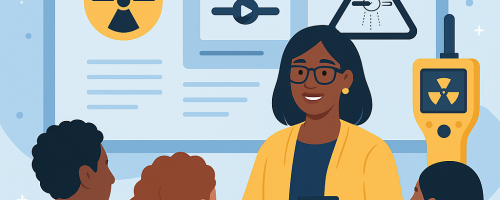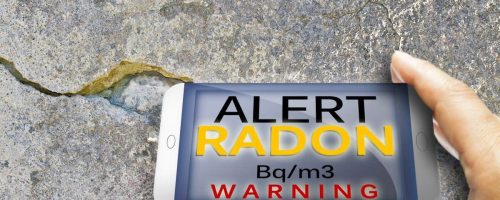Subjects:
- Understanding How Ionizing Radiation is Quantified
- Inventory of Radioactive Waste Across Canada
- Radiation Risk from Diagnostic Imaging Procedures
- Cellphone radiation: only the facts
- Dental X-rays and Brain Tumors — Oh My!
- “The Radioactive Orchestra”
- “Avoiding Invisible Waves”
- Cross-Canada Survey of Radon Levels in Homes: Final Report
- FDA Investigating Illegal Online Sales of Hand-Held X-ray Units
- “Where Are We Going? Who’s In Charge?”
- Independent Review Of The Exposure Of Workers To Alpha Radiation At Bruce A Restart, Reactor Unit 1 Bruce Power, ON
- Radiation Safety for Mine Workers Workshop
- Monitoring Personal Occupational Exposures
1. Understanding How Ionizing Radiation is Quantified
Understanding how amounts of radiation are quantified can be confusing to many. To help clarify concepts related to radiation dose, we suggest watching Part I and Part II of videos courtesy of Ionactive Consulting.
Visit our valued partner, the Canadian Centre for Occupational Health and Safety, for another excellent source of information about quantities and units of ionizing radiation.
2. Inventory of Radioactive Waste Across Canada
The Low-Level Radioactive Waste Management Office in Ottawa has produced a March 2012 report of the inventory of radioactive waste in Canada to the end of 2010. It is intended to provide an overall review on the production, accumulation and projections of radioactive waste in Canada. The data presented in this report has been gathered from many sources including regulatory documents, published reports and supplemental information provided by the nuclear regulator, waste producers and waste management facilities.
3. Radiation Risk from Diagnostic Imaging Procedures
Radiation risk from diagnostic imaging procedures has been a topic of increasing interest for the past several years, especially in cases in which children are involved. However, Dr. Joseph Grunz, a paediatrician from Mercy’s Children’s Hospital in St. Louis, reminds us that, while a small risk may indeed exist, the amount of detailed medical information gained from these procedures often saves lives. It is important to understand the risks associated with medical radiation exposure, but it is also important to appreciate the significant contribution it can provide toward a quick and accurate diagnosis.
Read the FULL ARTICLE, originally published in the St. Louis Post-Dispatch:
4. Cellphone radiation: only the facts
The debate over the link between cellphone use and radiation rages on. The topic is a difficult one because of the strong emotions on both sides of the argument; as to whether or not cellphone radiation is bad for you. Here is a May 31, 2012 article that offers some insights into this contentious topic. As always, we leave it to our visitors to digest the information and come to their own conclusions.
5. Dental X-rays and Brain Tumors — Oh My!
We are pleased to share an excellently written May 11, 2012 article by dentists, Dr. Grant Ritchey and Dr. Steve Hendry, BSc DDS FAGD in “Science Based Medicine” In the opinion of our scientists at the Radiation Safety Institute of Canada in addition to being well written, it is balanced and chock full of good old fashioned common sense in addressing the often contentious issue of the relationship between dental x-rays and brain tumors.
6. “The Radioactive Orchestra”
Welcome to the Radioactive Orchestra which is composed of thousands of radioactive isotopes. You can listen to their individual melodies and use them to create your own music. Have fun with this and even enter the contest at the top right of the link. Enjoy!
7. “Avoiding Invisible Waves”
An ARTICLE in the April/May, 2012 issue of OHS Canada Magazine, in which Mike Haynes, VP of Scientific Affairs at the Radiation Safety Institute of Canada is quoted, discusses the three types of ionizing radiation and their related risks for workers and members of the public generally; and takes the mystery out of this subject. It also discusses key strategies for reducing radiation dosage.
8. Cross-Canada Survey of Radon Levels in Homes: Final Report
Health Canada recently published its final report on a two year cross-country survey of radon levels in homes. Almost 14,000 homes were successfully tested in 121 Health Regions across Canada. The results indicate that 6.9% of Canadians are living in homes with radon levels above Health Canada’s guideline of 200 Bq/m3, with a higher incidence of high radon levels in Manitoba, New Brunswick, Saskatchewan, and the Yukon. The study noted that every province has areas of high radon levels and a significant number of homes with radon concentrations above the guideline.
Radon is an invisible, odourless, naturally occurring radioactive gas that can enter buildings through foundation cracks and similar unsealed openings. Long-term exposure to high concentrations of radon may lead to lung cancer – particularly if someone in your home is a smoker. Radon exposure is the second leading cause of lung cancer after smoking.
Read Health Canada’s Cross-Canada Survey of Radon Concentrations in Homes.
9. FDA Investigating Illegal Online Sales of Hand-Held X-ray Units
A PR Newswire-US Newswire Release indicates that the Food & Drug Administration (FDA) is warning both dental and veterinary professionals not to purchase or use certain hand-held x-ray units being sold online by manufacturers outside the United States.
The Radiation Safety Institute of Canada is publishing this story as a public service alert. We have no knowledge at present of any such practice in Canada and are making this information available as a precaution, in view of the international sources of these machines.
10. “Where Are We Going? Who’s In Charge?”
A report on Radioactive and Toxic Wastes from the Bancroft Uranium Mines: the earliest example of the effective application of “Good Science in Plain Language®” by the Radiation Safety Institute of Canada -The Final Report
11. Independent Review Of The Exposure Of Workers To Alpha Radiation At Bruce A Restart, Reactor Unit 1 Bruce Power, ON
The Radiation Safety Institute of Canada’s Final Report
12. Radiation Safety for Mine Workers Workshop
View the highly informative Workshop made by our President and CEO, Dr. Fergal Nolan, to the International Federation of Chemical, Energy, Mine and General Workers’ Unions, Sub Saharan Region, Johannesburg, South Africa.
13. Monitoring Personal Occupational Exposures
An ARTICLE written by Brent Preston, Scientist and Manager, National Laboratories (with kind permission of the CRPA).







